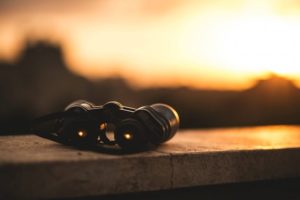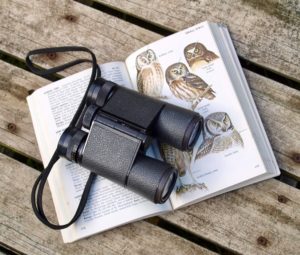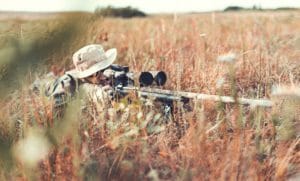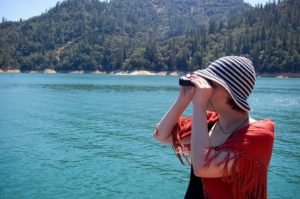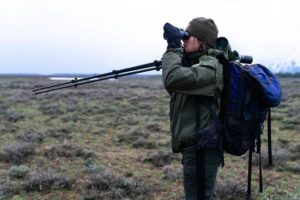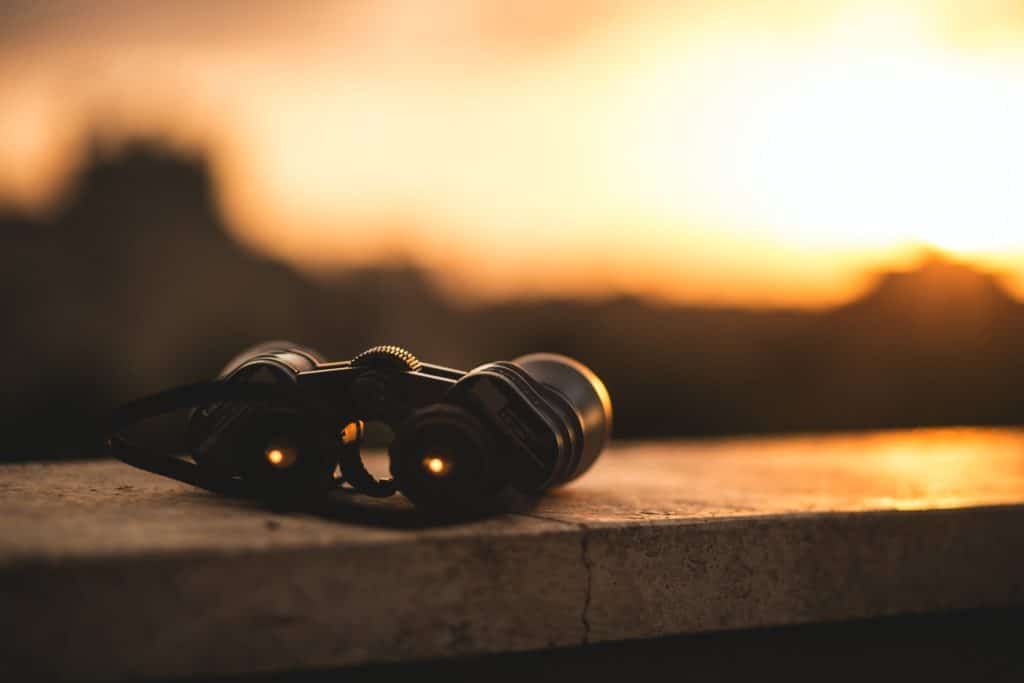A common misconception about compact binoculars is that the greater the viewing power, the better they are. However, aspects such as weight and dimensions also matter. Finding the best compact binoculars isn’t always easy.
To avoid getting confused with jargon, check out our complete guide on features to look out for below!
If you just want the products, here are the top 9 best compact binoculars right now:
- Zeiss Terra ED Best Compact Binoculars Overall
- Vortex Diamondback Best Compact Binoculars for Hunting
- Nikon PROSTAFF 7S Best Compact Binoculars for Birding
- Bushnell H20 Most Bang for Your Buck
- Celestron Trailseeker Best Compact Binoculars FOV
- Leica Ultravid Most Lightweight
- Wingspan Optics FieldView 8x32 Best Compact Binoculars for Sports
- Qudodo 20x50 Binoculars for Adults Best Compact Binoculars for Low-Light Settings
- Aurosports High Powered Most Budget-Friendly
Otherwise, work your way through this guide to ensure you’re grabbing the best pair for your needs.
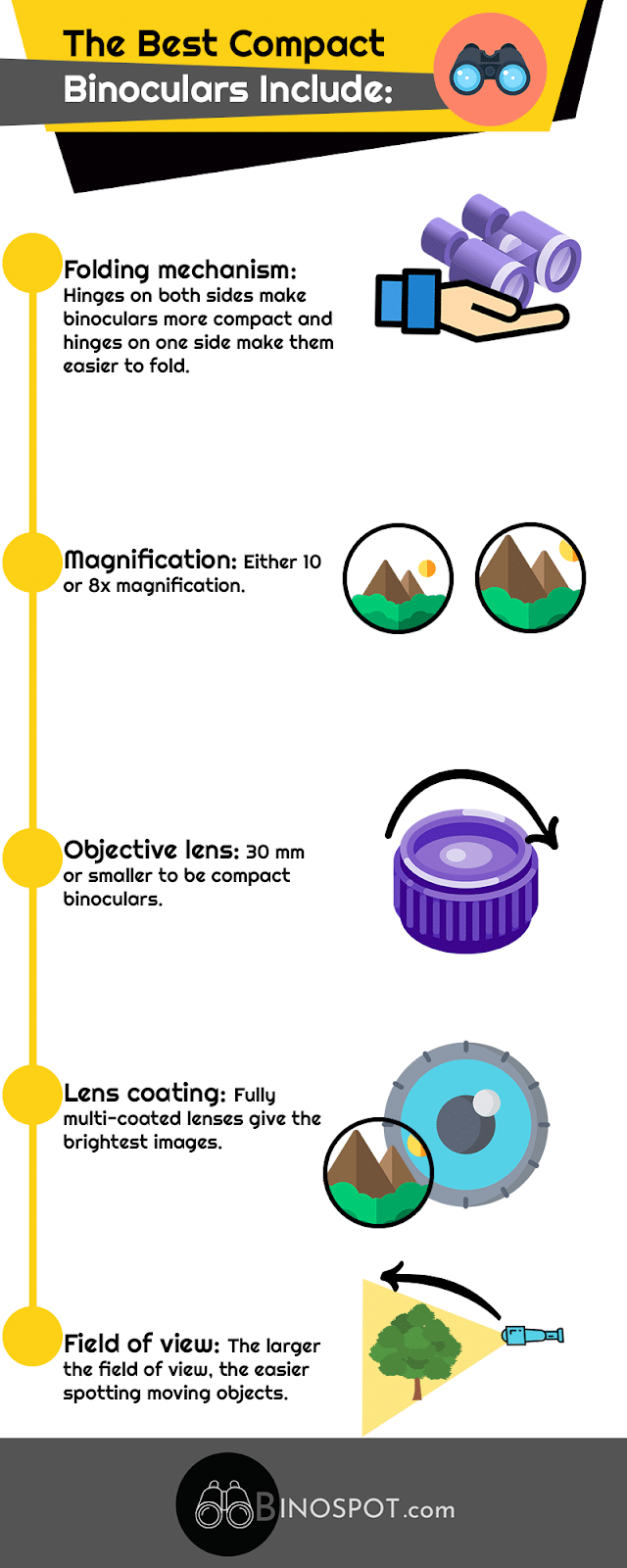
Factors To Consider When Buying Binoculars
Whether you’re looking for the best compact binoculars for travel or if you’re just going hunting, the best-suited compact binoculars can vary, depending on the below factors.
Folding Mechanism
Although compact binoculars tend to be small, it’s essential to know how slim they’ll be when they’re folded for storage.
It all depends on the folding mechanism.
Hinges on Both Sides
Binoculars with hinges for each barrel and a focusing wheel at the bridge’s center will fold down very small. This makes them ideal for carrying, storage and travel.
Our top pick for the best compact binoculars, the Zeiss Terra ED, is the perfect choice for those who want to travel with their binoculars due to the hinges on both sides.
Just One Hinge
Having just one hinge at the center of both barrels makes your binoculars less compact.
They’re easier to fold down, though, as you only have one mechanism to work with. This also means there are fewer mechanics to go wrong.
The Nikon PROSTAFF 7S is a good example of this from the reviewed products below.
Binocular Magnification
All binoculars have a magnification indicator, such as 8×25 and 10×32, but both numbers have a significant meaning.
First Digits: Magnification
The first set of digits refers to the magnification power. So if it’s 10, the binoculars will magnify the view by 10 times.
For example, if you’re looking at a bird 800 yards out, it’ll appear as if it’s 80 yards away. In order to calculate how the object you’re observing will look through the binoculars, divide the total real-life distance with the magnification power.
The best binoculars usually have either 8 or 10x magnification. Naturally, go for a larger number if you plan on using the binoculars at a greater distance.
Second Digits: Objective Lens
The second set of digits, 25 in the case of 8×25, is the objective lense’s diameter.
The number refers to the size of the lenses closer to the object, and you measure this in millimeters. The objective lens size gives you an understanding of how much light the binoculars can gather.
The larger the number, the brighter the image is through the binoculars. However, large objective lens sizes result in heavier binoculars, so compact binoculars tend to have lens sizes smaller than 30 millimeters in order to be lightweight and portable enough to carry them around easily.
If brightness is your foremost concern, but you still want your binoculars to be lightweight, make sure you check the coatings info below in conjunction.
Lens Coatings
The light that binoculars “catch” refracts several times through the lenses before it reaches your eyes.
Non-coated lenses lose light every time light is reflected, whereas anti-reflection coated lenses prevent this and give brighter images.
- Coated: At least one side of the lens has a one-layer anti-reflective coating; this is usually a cheaper option than multi-coated lenses.
- Fully coated: Both the sides of objective lenses and the prism have an anti-reflective coating.
- Multi-coated: Either one or more surfaces will have multiple coatings; this covers a wider range of wavelengths and tends to give you brighter images than single layers of coating.
- Fully multi-coated: All optical surfaces throughout the instrument are multi-coated.
Generally speaking, multi-coated lenses are the best since they have several different coating types and give you brighter images. On our list, the Leica Ultravid and Vortex Diamondback are binoculars that use multi-coated lenses.
Depending on your intended use of these devices, you should go for different types of coatings. Bird watchers require maximum color fidelity, while hunters may want better light transmission during dusk or dawn. Note that high contrast usually comes at the expense of color fidelity. Check the specs of your binoculars to find out whether they stay true to color or give a higher contrast which produces sharper-looking images.
Field of View
The field of view number tells you the width of the area you’ll see through the binoculars. The higher the number, the lesser zoom capacity you’ll get, but you’ll maintain a wide field of view.
For example, the best binoculars for sports tend to have a wide field of view so you can look at moving objects easier without an unsteady image. The Celestron Trailseeker, with its wide 409-foot field of view and the Wingspan Optics FieldView 8x32 that has a 362-foot FOV, is great for observing moving objects.
Eye Relief: Do You Wear Glasses?
If you wear glasses, you definitely need to focus on the eye-relief feature of the binoculars; this is the distance your eye can be from the eyepiece while still seeing your target clearly.
Of course, a pair of glasses adds extra distance between the eyepiece and your eyes. Look for eye relief of more than 11 millimeters; if you wear thick glasses, the distance should be more than 16 millimeters.
The product on our list with the highest eye relief distance is 17 millimeters Bushnell H20.
Check out this eye-relief video for a more visual representation:
Waterproofing
Most of the cases for binoculars would require them to be waterproof, be it hiking or some other outdoor activity. A waterproof coating will also play a significant role in keeping your binoculars non-slip, allowing you to grip them with wet hands.
Be aware that there are different levels of waterproofing—running from water-resistant to waterproof. Being “water-resistant” means that you can use the binoculars in light rain, while “waterproof” means that you can even submerge them in water.
Based on our reviewed products, the Vortex Diamondback is a great waterproof choice that withstands submersion as well as light drizzles.
Fog Proofing
Usually, fog forms when you move from warm environments to cold; this is also the case for the lenses inside your binoculars.
One thing most consumers forget while selecting the best compact binoculars is whether they’re gas sealed or not. These binoculars have their oxygen pumped from the main chamber and replaced with an inert gas like argon or nitrogen sealed in the lenses. These gases don’t allow your lenses to fog up due to moisture.
The most expensive binoculars have this feature, but the Bushnell H20 are excellent fog-proof binoculars at a low price.
Prisms
What’s most important to know in terms of prisms is that they affect the compactness of your binoculars and don’t really impact image quality. There are two types of prisms in compact binoculars:
- Porro: Porro prisms are mostly used in older styles of binoculars; they tend to be bulkier than those using roof prisms.
- Roof: Roof prisms are an advanced set of prisms that tend to be more compact than Porro prisms; this makes the pair of binoculars more lightweight and easier to transport. While they’re more compact, they’re also expensive and have a slightly smaller field of view.
Conclusively, if you’re ready to spend more, roof prisms should be your pick. A great pair of roof prism binoculars on our list is the Vortex Diamondback.
Extra Perks
Many prefer their binoculars to have a firm push to adjust the center focus. If the push is too firm, you can lose the alignment with a soft bump, and if it’s too hard, you won’t be able to adjust them to the right focus. You should pick the one that requires just the right amount of effort to focus. According to us, the Nikon PROSTAFF 7S has just the right amount of push.
Most of the binoculars we’ve reviewed come with lens caps, a neck strap, a wiping cloth, and a carrying case. However, customers tend to find they aren’t the best quality, so have replaced them with better independent versions. Even so, they can add value to your purchase.
Reviews of the 7 Best Compact Binoculars
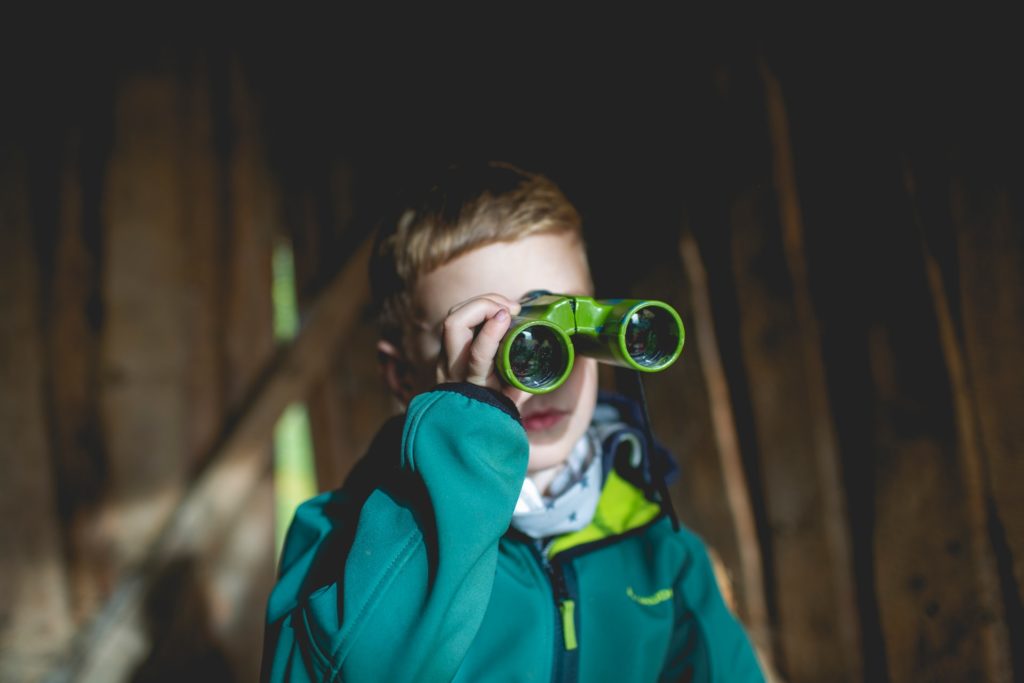
We’ve ranked these compact binoculars with the best first. While they’re all decent models, use the above buyer’s guide to help you decide which suits you best.
1. Best Compact Binoculars Overall
If you’re looking for the best compact binoculars for hiking, birding, and backpacking, have a closer look at the Zeiss Terra compact pocket binoculars. They’re our top pick as they give exceptional performance despite the lightweight frame. They have a 25-millimeter objective lens and are low profile, making them easy to carry all day. They’re also easy to pack as they fold down without much effort in a compact case with their dual hinges.
These Zeiss Terra binoculars come with multi-coated lenses made from extra-low dispersion glass, producing crystal-clear images. Customers have mentioned that they can clearly see whatever object they’re observing. The binoculars have a 357-foot FOV which is high for small binoculars; this lets you spot moving objects easily from afar.
With hydrophobic glass, nitrogen-filled lenses, and a waterproof casing, Zeiss claims that the body is weatherproof enough to sustain extreme temperatures and high-moisture climates. The Zeiss Terra also comes with a lens guard, neck strap, and a carrying case for further protection. But some users complain that this is a soft case that doesn’t give much protection and would like it to be more robust.
An added plus is their 16-millimeter eye relief, which makes them a great fit for eyeglass wearers.
But note that buyers complain about lack of quality control for this product and that some products have glue residue or pieces that fall off the binoculars. They’re made in China, which might have affected their build quality negatively. Several customers also state that the eyecups don’t feel comfortable.
Pros
- Produces sharp images.
- Wide FOV.
- Compact and lightweight.
- Weatherproof.
- Easy to fold due to double hinges.
- Good for eyeglass wearers.
Cons
- Quality control is lacking.
- Eyecups feel hard on the skin.
2. Best Compact Binoculars for Hunting
These compact Vortex binoculars are just a pleasure to use for hunting. The image quality is very sharp and clear, thanks to their fully multi-coated lenses and 28, 32, or 42-millimeter objective lenses. They also have a rather wide FOV of 340 feet which enables you to track moving objects well.
The Vortex Diamondback has a sleek, short hinge design and top-grade roof prisms, which gives them a compact look. People also like the casing it comes with that protects the binoculars.
The frame consists of durable and non-slip hardened rubber, so it won’t slip from wet hands. Also, these binoculars are waterproof and fog-proof, which you need in the forest.
The main complaint users have with these compact binoculars is that they don’t perform the best in low-light conditions. If you hunt during dusk or dawn, these aren’t for you. Unfortunately, the eyecups are reportedly a little short, which some users find uncomfortable.
Pros
- Fully multi-coated lenses.
- Compact roof prism.
- Good for hunting.
- Nice case.
- Completely waterproof.
Cons
- Not the best during dusk or dawn.
- Uncomfortable eyecups.
3. Best Compact Binoculars for Birding
Indeed, Nikon is internationally renowned when it comes to images; their excellence in cameras carries along to their binoculars too. The PROSTAFF 7S has great color rendition, a compact 30-millimeter objective lens, and weighs less than 1 pound, making them ideal for bird watching. Further adding to their compactness is that they use a roof prism.
These binoculars from Nikon incorporate the latest technologies in optics to create a top-notch product. They’re made of a high-quality rubber armor coating, which is very comfortable to hold and won’t slip from wet hands. The binoculars are sturdy and ready to take physical shock or be immersed in water. Even the customer reviews back this argument.
Another popular feature is that these binoculars are very easy to use, and they focus quickly and hold steady due to the firm push that stays put but isn’t difficult to change.
However, some customers complain about the imaging and suggest that it could be better. The trade-off for their color fidelity is that you’ll experience fringing when observing objects with high contrast. Users also don’t like that they only have a 1-year warranty while Vortex, for example, offers a lifetime warranty.
Pros
- Produces true-to-color images.
- Very lightweight.
- Ideal for bird watching.
- Firm push.
- Non-slippery and comfortable material.
- Water and shockproof.
Cons
- Not the best optics.
- Color fringing.
4. Most Bang for Your Buck
The Bushnell H20 are among the best compact binoculars for a great value price; they’re specially made to be waterproof with O-ring sealed lenses and non-slip rubber armor. Also, they offer a 17-millimeter eye relief, which is among the best on our list. Even those with thick glasses can use the Bushnell H20.
These binoculars have a compact design using a roof prism and weigh light in hand, so you can use them for many hours at a time. Customer reviews suggest that the large center focus knob is easy to adjust, even with smaller hands. But the downfall of this large-sized knob is that it moves around too easily, and you have to keep re-adjusting the focus as the image blurs even with a soft push.
As stated before, they’re value for your money; perhaps this is why the imaging isn’t that good when compared to other products on this list. Objects tend to color-fringe when you look through these binoculars, especially bright objects.
Pros
- Value for money.
- 17-millimeter eye relief.
- Waterproof.
- Portable.
- Handy and easy to use.
Cons
- The knob tends to move easily.
- Imaging isn’t that good.
5. Best Compact Binoculars FOV
The Celestron Trailseekers have among the widest fields of view at 409 feet compared to other binoculars in the same price category. They also come with fully multi-coated lenses that make sure that the image sharpness doesn’t dwindle even along the fringes.
These binoculars include a lot of accessories, such as an objective lens cap, a neck strap, an eyepiece rain guard, a lens cloth, and a carrying case which is an additional plus. Another good feature is that they use metal eyecups that last longer and take less of a beating than your typical plastic ones.
Except for the sturdier metal cups, they’re not quite up to scratch in terms of material quality. Several components can supposedly fall off the binoculars when you use them, according to customers; they also tend to rust, and users report having to pay for repairs themselves.
Unlike other binoculars in their price range, the Celestron Trailseeker binoculars don’t come with a hardened rubber coating, making them slippery in wet hands.
Pros
- Provides a wide FOV.
- Produces sharp images.
- Comes with many accessories.
- Durable metal eyecups.
Cons
- Doesn’t grip well.
- Not great material quality.
6. Most Lightweight
Of all the compact binoculars we’re reviewed, the Ultravid compact binoculars from Leica are the lightest ones we’ve looked at. Weighing just over half a pound, the Leica Ultravid BRs are easy to carry around and also fit in most hand sizes; they’re also built with dual hinges that make them super compact when folded.
They absorb a lot of light due to their HDC multi-coated lenses to produce crystal clear images even in overcast weather. The Ultravid optics are great in general.
An additional plus is that these are waterproof, even when submerged in water. The Aquadura lens coating specifically protects the lenses from any H2O. So why not use them at sea as well?
These binoculars also have some significant drawbacks; the first one is the price. In fact, they’re the most expensive ones we’ve looked at for this review. It’s unjustifiable that they aren’t as durable as Vortex or Zeiss binoculars while costing much more. Some users complained that the diopter—the feature that brings lenses to the same focus level—sticks sometimes.
Pros
- Low-profile and lightweight.
- Very portable.
- Optics are superb.
- Waterproof when submerged.
Cons
- Very expensive.
- Prone to impact damage.
- Diopter sticks.
7. Best Compact Binoculars for Sports
The FieldView compact binoculars from Wingspan come with extremely sharp images, according to customers. They show things clearly even from far away considering the rather affordable price.
According to us, as well as several users, these are the best compact binoculars for sports as the imaging is quite up to scratch and the wide field of view at 362 feet helps users spot all the activities going on.
Another popular feature is that these binoculars have lens covers on both ends, for the lenses as well as over the eyepieces. Customers also like how easy they are to grip with their ergonomic, non-slip design.
One drawback is that these are bigger than other products in our review, and buyers state that these binoculars are larger than other compact ones. This is probably due to the relatively large 32-millimeter objective lens that makes this device rather bulky. Also, customers complain that there are very limited instructions on how to use these binoculars.
Pros
- Clear imaging.
- Value for money
- Designed for sports.
- Easy to grip.
Cons
- Not compact.
- Limited user instructions.
8. Best Compact Binoculars for Low-Light Settings
These compact binoculars from Qudodo are reportedly great for low-light night vision use. With an objective lens of 50 millimeters, they might be a little bulky, but this increases the image brightness. Along with an FMC optical multilayer green film, they reportedly have 99.8 percent light transmission, which is very high.
These binoculars come with a phone adapter which users appreciate; this means that you can save images from your binoculars onto your phone. However, this increases the bulkiness of the product.
Another plus is the solid aluminum frame as well as the specially made mirror frame of this device that protects against impact. Also liked is the cool black rose-colored design.
Users complain that even though Qudodo advertise these as 20x binoculars, they seem to be closer to 10x magnification; some call this false advertising.
Pros
- Optimal for low-light environments.
- Phone adapter.
- Shockproof.
Cons
- Quite bulky.
- Doesn’t seem to provide the 20x magnification as stated.
9. Most Budget-Friendly
These are the most affordable binoculars we’ve reviewed in this article. Looking at their aesthetics, we also think that they’re kind of cool as well. It feels like they’re from a science fiction movie.
Another great thing is that they’re very compact and fit in one hand; you can even put them in your pocket. They’re also non-slip and have rugged rubber armor, so they won’t slip from your hands.
If you really want to zoom in, know that these can zoom in up to 12 times, which is very far, but don’t expect a stable image if you use the 12x magnification.
As a matter of fact, the imaging isn’t satisfying, despite Aurosports marketing them as “high power,” and they aren’t good for longer-range viewing. The focus is also lacking, and many users report not getting clear images with these binoculars.
Pros
- Very inexpensive.
- Don’t slip.
- Fit in one hand.
Cons
- Imaging is poor.
- Lacking in focus.
Conclusion
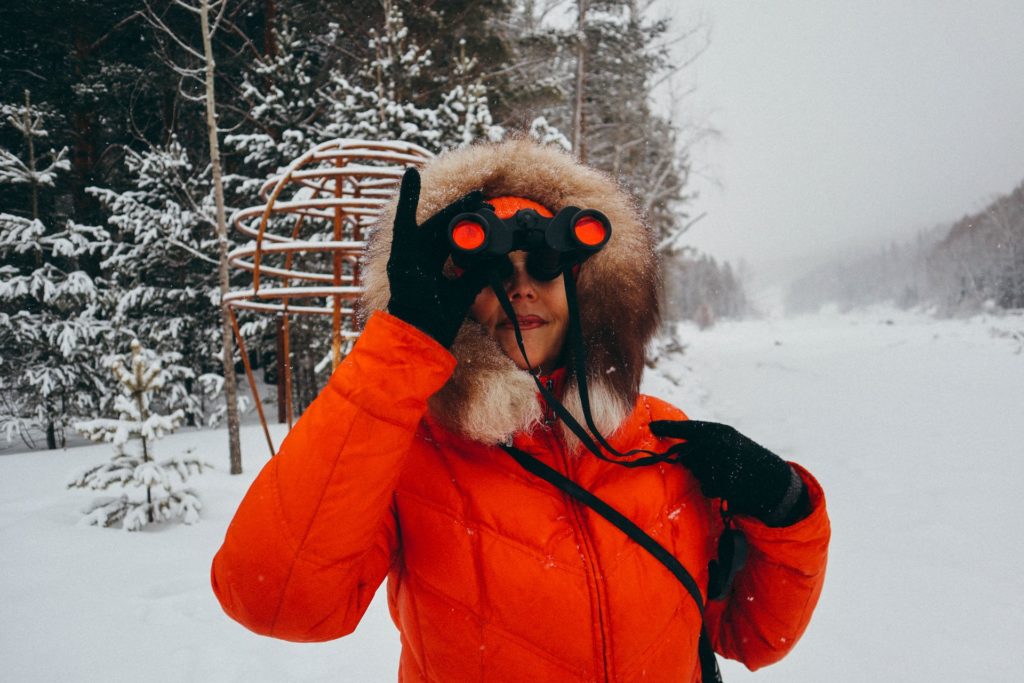
While all of these compact binoculars are portable and won’t get too heavy in your backpack, our ultimate favorite pair are the Zeiss Terra ED. They’re compact when folded, weatherproof, provide clear images, and have a wide FOV which is great for hunting or bird watching.
If you’re looking for a more affordable alternative, go for the Nikon PROSTAFF 7S, which is especially great for watching birds. For all hunters, the Vortex Diamondback is another high-performing option.
Depending on how you intend to use them, you should pick the best compact binoculars for you.










